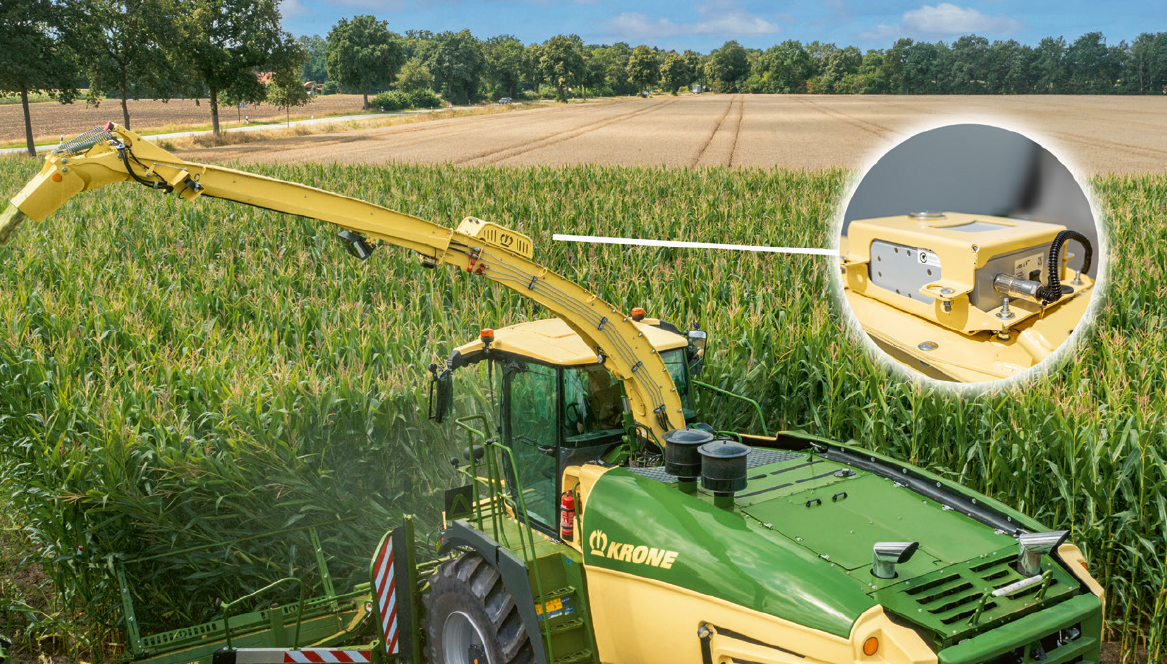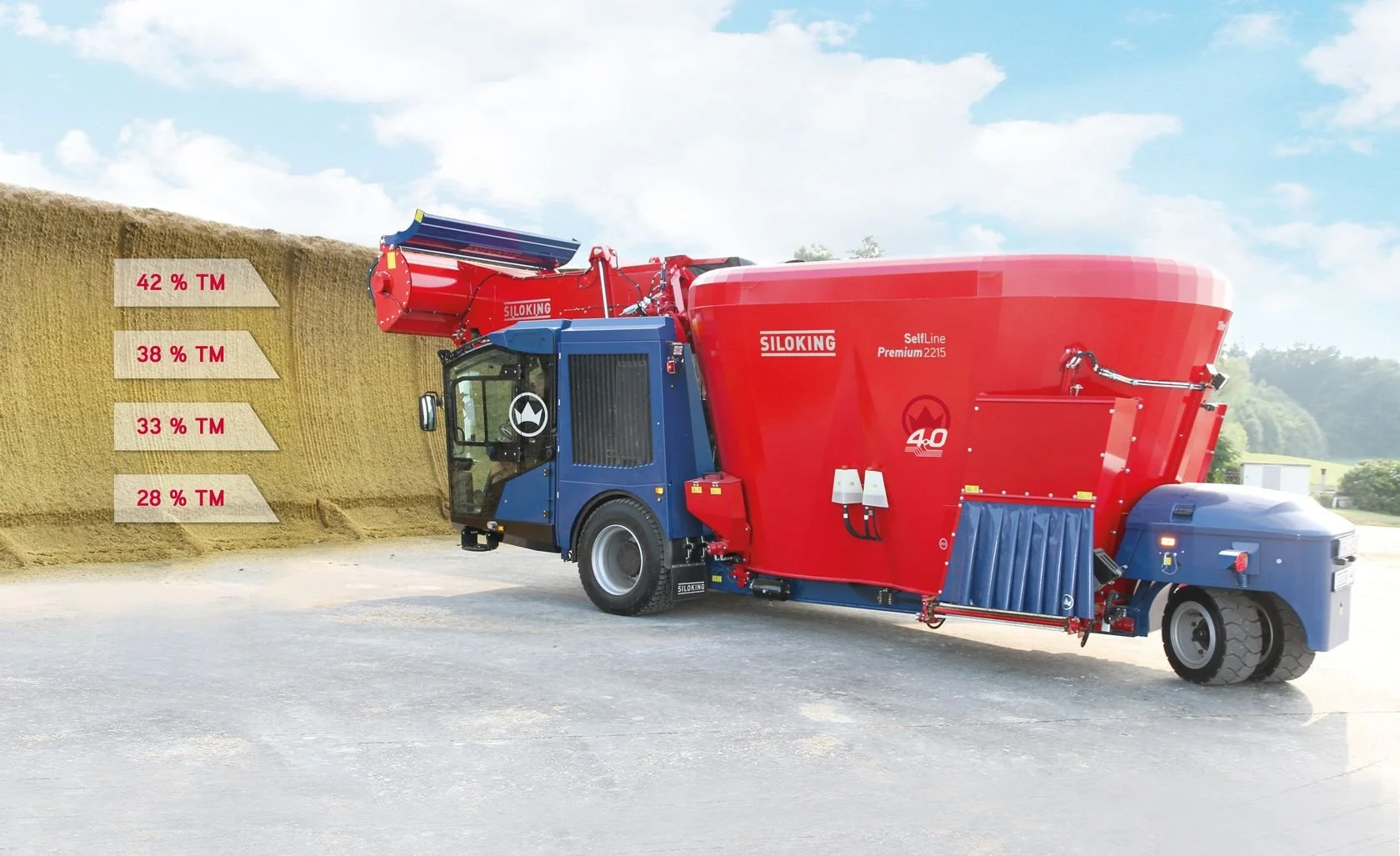NIR Silage sensors, what is the future?
Politicians do it, gamblers at the races do it, and first rate idiots do it too - they all try to predict the future. Everyone should know better than trying to second guess what might happen sometime down the line. So here’s my idiot moment (it’s not the first nor will it be the last), but I’m often asked where I think a particular area of silage making, storage or feeding is going to go. And technology is one of the most common areas that people want to know just what might be around the corner. Now this might be to try and make a better informed choice at the point of investment; trying to avoid being the Betamax buyer when the world all went VHS; but ultimately it’s all just a guess.
What NIR can tell you
Near-Infra-Red sensors or monitors use photo-spectroscopy to “read” the forage. In essence this shines a light at the forage and then reads the light that gets reflected. Different products reflect or absorb different wavelengths of light and as long as the box knows what it should be looking at, it can produce massive amounts of realtime date as to what is actually going up the spout. With an accurate “map” to compare the raw data against, the monitor can provide you with yield, dry matter, crude protein, storage or sugar, ADF, NDF and ash, so a lot of data.
One thing we know for sure is that the world seems to love data. The more data the better seems to be the mantra of technology developers. I mean who ever thought we would be in a situation where we needed to accurately monitor an internal combustion engine with more than 40 sensors, doing data calculations at 500 times per second? But then an NIR sensor on a forager can be taking 4000 readings per second, or around 1 million samples per load! Just how much data can you use?
How much silage data do you need?
Chances are, unless you are currently using NIR, if you have any data at all for your silage, it’s probably some sample analysis taken once you’ve opened up the clamps. Now this is better than nothing, but some might argue that while this data is useful to formulate a ration, it’s all a bit historic - and the sample size might be half a dozen points per clamp so somewhat less than an NIR. So does that mean we all need one million samples per load or is there a middle ground?
Well the million of samples the NIR sensor takes are just used to average out some sort of sensible reading. This data can be used with yield mapping to work out what fields or field areas need some TLC in the future. It can also be linked back to the slurry application and an NIR sensor can “read” the slurry nutrients to ensure you know exactly what has been applied to where. This is a sort of closed feed back loop of information that actually begins to have some real use.
What use is the silage analysis from the harvester?
The data from the on-harvester NIR is great to tell you what you have put into the clamp and it can help you plan to make better silage in the future, or possibly it can tell you what you need to harvest in the next cut to meet your targets. But what it doesn’t do is help you to make better silage during this cut does it?
Or does it? Because it’s possible to link the realtime harvest data to the machine settings so it really should be possible to get the machine settings correct for the crop being harvested. The obvious one being able to automatically adjust the chop length to match the current dry matter percentage.
Improving the use of NIR data
So this is the future gazing bit…. For me, on-harvest data is really useful, but what I want is on-mower data, because this is the data that lets you correct things, change things to make the best silage you can. With real data off the mower, you have a good estimate of yields before you even start to pick-up the crop. With this information you could accurately decide the area you want to cut to fill a clamp, rather than phone the driver for a “is there much on it?” conversation. You should also have dry matter values for the mown crop so you could plan the wilting strategy and perhaps rearrange the order the fields are cleared. You would have the sugar and protein levels at the point of cutting so you could then accurately track the in-field losses and make alterations to minimise these in the future.
SaMASZ triple mowers
And the really trick bit? Well if you could read the ash levels, then you would know just how much of the rubbish you don’t want that the mower is picking up. The dead and decaying leaves that you want to leave behind. Set some parameters for this value, and you could get the tractor to automatically adjust the hydraulic top link to re-set the cutting height to keep the blades above the stuff you don’t want.
Would an on-mower NIR make the one on the chopper pointless?
No I don’t think so, because you really want the data for what is being harvested as well as the data from what was cut. Ideally you would go the whole hog and fit an NIR to the mixer or TMR wagon as well. This way you could really track the whole progress of the crop from field to trough. With the right information you could refine your practices to reduce losses and make the very most out of the forage. You could also ensure that each mix in the feeder wagon is exactly meeting your target specification because you would, have all the data from every mix. If the silage is spoiling from exposure to oxygen, you would just be adding more “straights” to each mix to meet the target nutrients. It would be recorded and hit your costs but not your production levels.
Siloking fitted with on-board NIR
NIR isn’t accurate enough though
That’s the usual quote, but that is not the real issue here. The NIR really is EXTREMELY accurate, but its results will be rubbish if the “map” it compares the raw data against isn’t representative of the stuff you are measuring. In my future, sensors would be cheap and plentiful and their black boxes would be wirelessly connected to a constantly updated database of product maps. With this, lab analysis of your silage would be almost redundant. And sensors will get cheaper, it’s one of the law’s of technology that if something is really useful, then it will get more powerful and cheaper over time.
Is any of this happening?
Well we already have plenty of on harvester options, and some in-mixer solutions but I’ve yet to discover anyone thinking of an on-mower monitor. Some suggest the solution is hand held devices but these just don’t offer the same consistency. It’s difficult to operate a hand held NIR at 400 times a second and not really possible to keep up with a BigM at 18kph either. So I’m still hoping that one of the big tech machinery companies will eventually join up all the dots and take silage making into the data age, but we will see.
If you want to know more about what near infrared monitors can do for your silage or would like to discuss any other aspects covered in this series, contact me at jeremy@silageconsultant.co.uk


